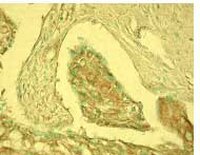PC373 Sigma-AldrichAnti-p40 (5-17) Rabbit pAb
This Anti-p40 (5-17) Rabbit pAb is validated for use in Immunoblotting, Paraffin Sections for the detection of p40 (5-17).
More>> This Anti-p40 (5-17) Rabbit pAb is validated for use in Immunoblotting, Paraffin Sections for the detection of p40 (5-17). Less<<Recommended Products
Overview
| Replacement Information |
|---|
Key Spec Table
| Species Reactivity | Host | Antibody Type |
|---|---|---|
| H | Rb | Polyclonal Antibody |
| Product Information | |
|---|---|
| Form | Liquid |
| Formulation | Undiluted serum. |
| Positive control | SKOV3 cells or breast carcinoma tissue |
| Preservative | None |
| Quality Level | MQ100 |
| Biological Information | |
|---|---|
| Immunogen | a synthetic peptide corresponding to amino acids 5-17 of human p40 |
| Immunogen | Human |
| Host | Rabbit |
| Isotype | IgG |
| Species Reactivity |
|
| Antibody Type | Polyclonal Antibody |
| Physicochemical Information |
|---|
| Dimensions |
|---|
| Materials Information |
|---|
| Toxicological Information |
|---|
| Safety Information according to GHS |
|---|
| Safety Information |
|---|
| Product Usage Statements |
|---|
| Packaging Information |
|---|
| Transport Information |
|---|
| Supplemental Information |
|---|
| Specifications |
|---|
| Global Trade Item Number | |
|---|---|
| Catalogue Number | GTIN |
| PC373 | 0 |
Documentation
Anti-p40 (5-17) Rabbit pAb SDS
| Title |
|---|
Anti-p40 (5-17) Rabbit pAb Certificates of Analysis
| Title | Lot Number |
|---|---|
| PC373 |
References
| Reference overview |
|---|
| Hibi, K., et al. 2000. Proc. Natl. Acad. Sci. USA 97, 5462. Yamaguchi, K., et al. 2000. Int. J. Cancer 86, 684. Hagiwara, K.,et al. 1999. Cancer Res. 59, 4165. Kaelin W. G. Jr. 1999. J. Natl. Cancer Inst. 91, 594. Osada, M., et al. 1998. Nat. Med. 7, 839. Senoo, M., et al. 1998. Biochem. Biophys. Res. Commun. 248, 603. Trink, B., et al. 1998. Nat. Med. 4, 747. Yang, A., et al. 1998. Mol. Cell 2, 305. |








